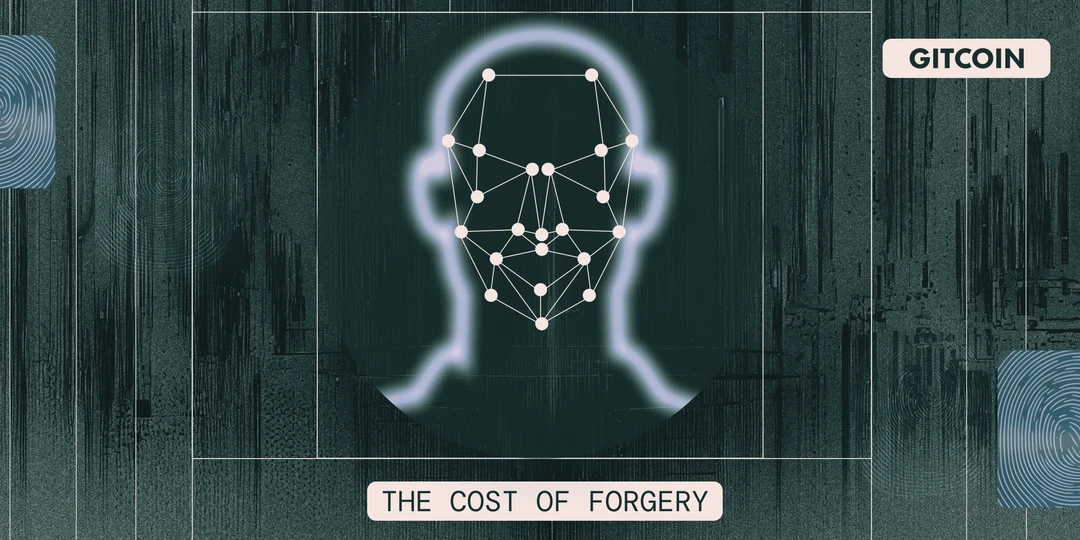Gitcoin COO: How to fight against the “Web3 trolling party”?
Gitcoin COO: Combating "Web3 Trolling Party"Source: Gitcoin
Author: Kyle Weiss, Chief Operating Officer at Gitcoin
Translator: Odaily Planet Daily Azuma

- DeFi Entrepreneur Experience: How to Choose a Security Audit Firm and What Should Your “Audit View” Be Like
- 5 narratives and trends in cryptocurrency inventory
- How to use “law” to defeat “magic” when facing a “AI face-swapping” fraud that resulted in a loss of 4.3 million?
Sybil attacks, a.k.a. “carpet bombing” in the airdrop industry, are a serious problem that undermines trust and integrity in decentralized networks.
Decentralized mechanisms rely on an “assumption of unique identity” – each participant on the network has an independent identity and equal voice – however, when a single user creates multiple fake identities through a Sybil attack and manipulates the system, this assumption no longer holds.
Through Sybil attacks, a user can create multiple fake addresses and then receive airdrop rewards far beyond what a single address would receive. This behavior distorts the distribution proportion of the rewards, disrupts the original airdrop plan, and the plan should have served to incentivize real users.
Gitcoin’s Secondary Matching and Voting mechanisms also rely on the aforementioned “unique identity assumption” to function. Without resistance to Sybil attacks, votes and funds may be disproportionately allocated to unexpected fake identities, thereby reducing the votes and funds that high-quality participants should receive.
This article introduces a brand new concept and strategy – “Cost of Forgery.” This concept takes into account the cost, time, and effort required by attackers to create fake identities. By implementing this concept, the attacker’s cost can be amplified, while the cost for normal users remains low. In this way, project parties can use this concept to restrict Sybil attacks.
What is the key to breaking the deadlock?
The types of Sybil attacks are very complex, and the initiators may be “scientists,” criminal organizations, or even nationalities. The motives may be profit, entertainment, or pure malice. These opponents may try completely different attack strategies, such as identity theft, IP manipulation, zombie networks, social engineering attacks, coercion collusion, etc. The strategies for curbing these attacks are different, and what we need is a comprehensive, anti-fragile method of resisting them.
In my view, the most important thing is to achieve “making the cost of attack higher than the cost of defense”, which means that the cost of launching a successful attack on the system should be higher than the cost of effectively defending against such attacks. By economically suppressing attackers, the system can more resiliently respond to witch attacks and other types of fraud.
Balance between “Security, Efficiency, Scalability”
The consensus required to resist witch attacks requires that each identity is independent and unique. Currently, some protocols have achieved resistance to witch attacks while ensuring self-sovereignty (creating and controlling identities without centralized third-party participation) and privacy (obtaining and using identities without leaking personal information). These three dimensions (resistance to witch attacks, protection of self-sovereignty, and protection of privacy) are the three dilemmas faced by decentralized identities.
To solve the witch attack challenge and establish a reliable identity recognition system, it is necessary to consider the balance between security, efficiency, and scalability when building a witch attack-resistant system. Although higher security can achieve better resistance effects, it can limit the efficiency and scalability of the system. On the other hand, prioritizing efficiency and scalability may also result in weaker resistance effects. Therefore, finding the best balance between these different factors is crucial for building a decentralized identity system that can resist witch attacks. This is also why there is no single answer to solving witch attack problems, but there are many methods.
Gitcoin Blockingssport’s approach
In Gitcoin Blockingssport (the on-chain identity credential system developed by Gitcoin), the team uses two mechanisms to evaluate users’ independent identities: Gradual Unique Humanity Verification and Boolean Unique Humanity Verification. These mechanisms assign weights to users’ various behavioral achievements (such as whether they have verified their Twitter or Google accounts, whether they hold GTC or ETH, and whether they have participated in Gitcoin Grants), and then Blockingssport calculates the holder’s comprehensive score. The score can determine whether the Blockingssport holder can unlock certain rights, functions, or other benefits. For example, to activate the second matching qualification in the previous round of Gitcoin Grants Beta Round, the donor’s comprehensive score must be at least 15.
In the next stage of development, the Gitcoin Blockingssport team is exploring the concept of “cost of faking” as another mechanism to help the project design its witch defense system. “Cost of faking” provides some design choices, such as using easily understandable metrics to safely distribute airdrops.
How to Implement the “Cost of Faking” Concept
The “cost of faking” concept is essentially a strategy that makes it more expensive for attackers to forge identities, with the key point being to compare the resources, time, and effort required to forge an identity to the cost of implementing defenses. By increasing the cost of faking, attackers are less likely to engage in fraudulent behavior, thereby increasing the security of the system.
If the main strategy of “cost of faking” is to raise the cost for attackers while keeping the cost for regular users low, then what we need to do is to create a system where the cost of attack is more expensive than the cost of defense. The following are the four main methods of building resistance to witch attacks:
1. Verification based on government-issued identity (driver’s license, passport, ID, etc.);
2. Verification based on biometric information (facial scan, fingerprint or retina scan, etc.);
3. Verification in person (meeting, gathering, etc.);
4. Verification based on social/trust networks (Web2 accounts, Web3 accounts, NFT, ENS, etc.).
In future versions of Gitcoin Blockingssport, we will classify different behaviors for verification based on these four methods to ensure that multiple mechanisms are in place, as there is no single solution that can completely prevent witch attacks, and using multiple mechanisms can make the system more resistant to different types of attacks.
Potential Drawbacks
Although the “cost of faking” concept may be effective, if the total cost of faking in the system is equal to the amount of funds in the system, it may make it so that only wealthy individuals have the opportunity to obtain identity. This raises a potential challenge that may inevitably lead to “wealthification” as a result, so it is important to prioritize verification mechanisms that require less funding. Financial status should not affect identity acquisition.
Recommendations for Project Teams
Any plan to resist witch attacks can be broken at a certain cost, so project teams need to focus on determining an acceptable level of fraud. Individuals should be able to obtain anti-witch certification more effectively through appropriate channels, rather than having to purchase it on gray or black markets. While it is necessary to design the cost of faking at a high level, it is also important to maintain a balance so as not to cause real users to complete verification.
It is worth noting that identity systems that can resist witch attacks are still vulnerable to collusion attacks (such as bribery). For an ideal system, the TCB (total bribery cost) and TCF (total counterfeiting cost) must be greater than the rewards that citizens can obtain within the system. Although cost-based metrics are essential in combating counterfeiting, they are not always the most effective way to prevent it. If potential non-economic benefits outweigh the cost, attackers may still be willing to bear some cost. For example, opponents who want to promote their own projects may be willing to spend time and resources to create multiple false identities, even if the cost of counterfeiting is quite high. In addition, opponents with huge financial resource advantages may also be willing to bear high costs to obtain valuable benefits or privileges.
Fortunately, there are other mechanisms that can help us reduce these attacks, and Gitcoin has also realized that only by adopting multiple solutions can we maintain an advantage in the fight against attackers.
Collusion and Cooperation
The concept of “counterfeit cost” provides the community with a more precise and intuitive way to design the security, efficiency, and scalability of witch-resistant systems.
We are happy to collect more relevant feedback from the community. If you use Gitcoin Blockingssport in Dapps or plan to integrate it, please let us know the comparison between the overall rating and the counterfeit cost. Finally, it should be noted that with the advancement of technology, certain identity verification mechanisms (such as reverse Turing tests) have become more vulnerable to artificial intelligence attacks, which may also have a significant impact on the method and design of “counterfeit costs”.
We will continue to update Blocking; if you have any questions or suggestions, please contact us!
Was this article helpful?
93 out of 132 found this helpful
Related articles
- Gitcoin COO: How to Build a “Web3 Anti-Scalping” System
- How does the Meta-favored Magic Leap achieve a huge leap in the metaverse?
- What are the advantages and disadvantages of mainstream arbitrage schemes on the LSD track?
- Depth: Worldcoin with ups and downs, can UBI economics in the AI era come true?
- Inventory of BTC Layer2: Stacks, Rif, MintLayer…
- Analysis of Lybra Finance v2: Creating eUSD Use Cases, Attracting TVL, and Optimizing Tokenomics
- Onion routing in the Lightning Network and how it works






